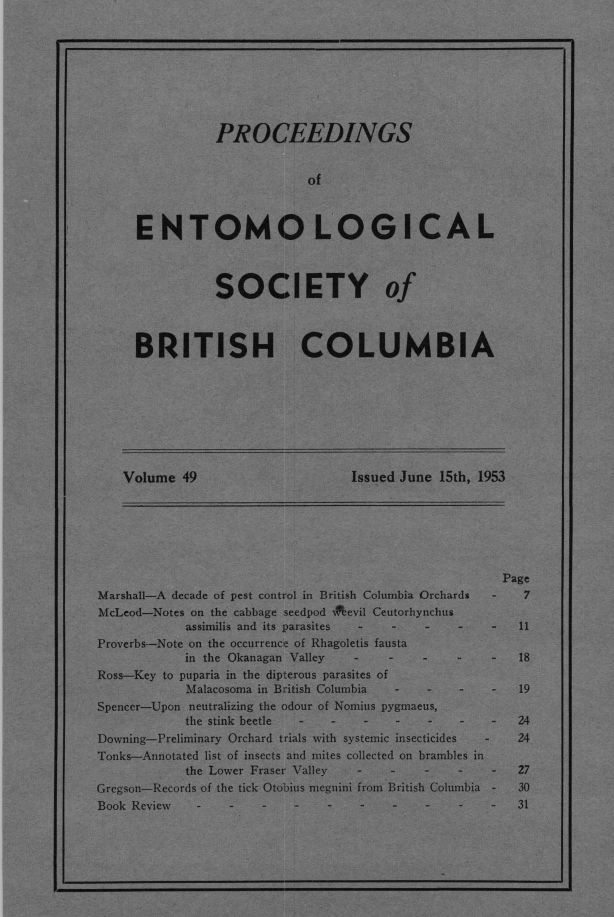Notes on the cabbage seedpod weevil <i>Ceutorhynchus assimilis</i> and its parasites
Abstract
n/aReferences
Baker, W.W. 1936. Notes on a European weevil, Ceutorhynchys assimilis Payk., recently found in the State of Washington. Canadian Ent. 68:191-193.
Breakey, E.P. et al. 1944. Western Washington Experiment Station. Entomology. In Washington Agr. Expt. Sta. Bull. 455 (54th Ann. Rept.). pp. 117-125.
Carlson, E.C., W.H. Lange, Jr., and R.H. Sciaroni. 1951. Distribution and control of the cabbage seedpod weevil in California. J. Econ. Ent. 44:958-966.
Clausen, C.P. 1940. Entomophagous insects. McGraw-Hill Book Co., New York.
Division of Entomology. 1935. The Canadian Insect Pest Review 15. Canada Dept. Agr.,Ottawa.
Hagen, K.S. 1946. The occurrence of Ceutorhynchus assimilis (Payk.) in California. PanPacific Ent. 22:73.
Hanson, A.J., E.C. Carlson, E.P. Breakey, and R.L. Webster. 1948. Biology of the cabbage seedpod weevil in northwestern Washington. Washington Agr. Expt. Sta. Bull. 498.
Morris, K.R.S. 1938. Eupelmella vesicularis (Chalcididae) as a predator of another chalcid, Microplectron fuscipennis Zett. Parasitology 30:20-32.
Peck, O. 1951. Superfamily Chaicidoidea. Pp. 410-594. In Hymenoptera ofAmerica north of Mexico. Synoptic catalog, by C.F.W. Muesebeck, K. V. Krombein, and H.K. Townes. US. Dept. Agr., Agr. Monogr. 2.
Downloads
Published
Issue
Section
License
Authors who publish with the Journal of the Entomological Society of British Columbia agree to the following terms:
-Authors retain copyright and grant the journal right of first publication with the work simultaneously licensed under a Creative Commons Attribution License that allows others to share the work with an acknowledgement of the work's authorship and initial publication in this journal.
-Authors are able to enter into separate, additional contractual arrangements for the non-exclusive distribution of the journal's published version of the work (e.g., post it to an institutional repository or publish it in a book), with an acknowledgement of its initial publication in this journal.
-Authors are permitted and encouraged to post their work online (e.g., in institutional repositories or on their website) prior to and during the submission process, as it can lead to productive exchanges, as well as earlier and greater citation of published work (See The Effect of Open Access).


